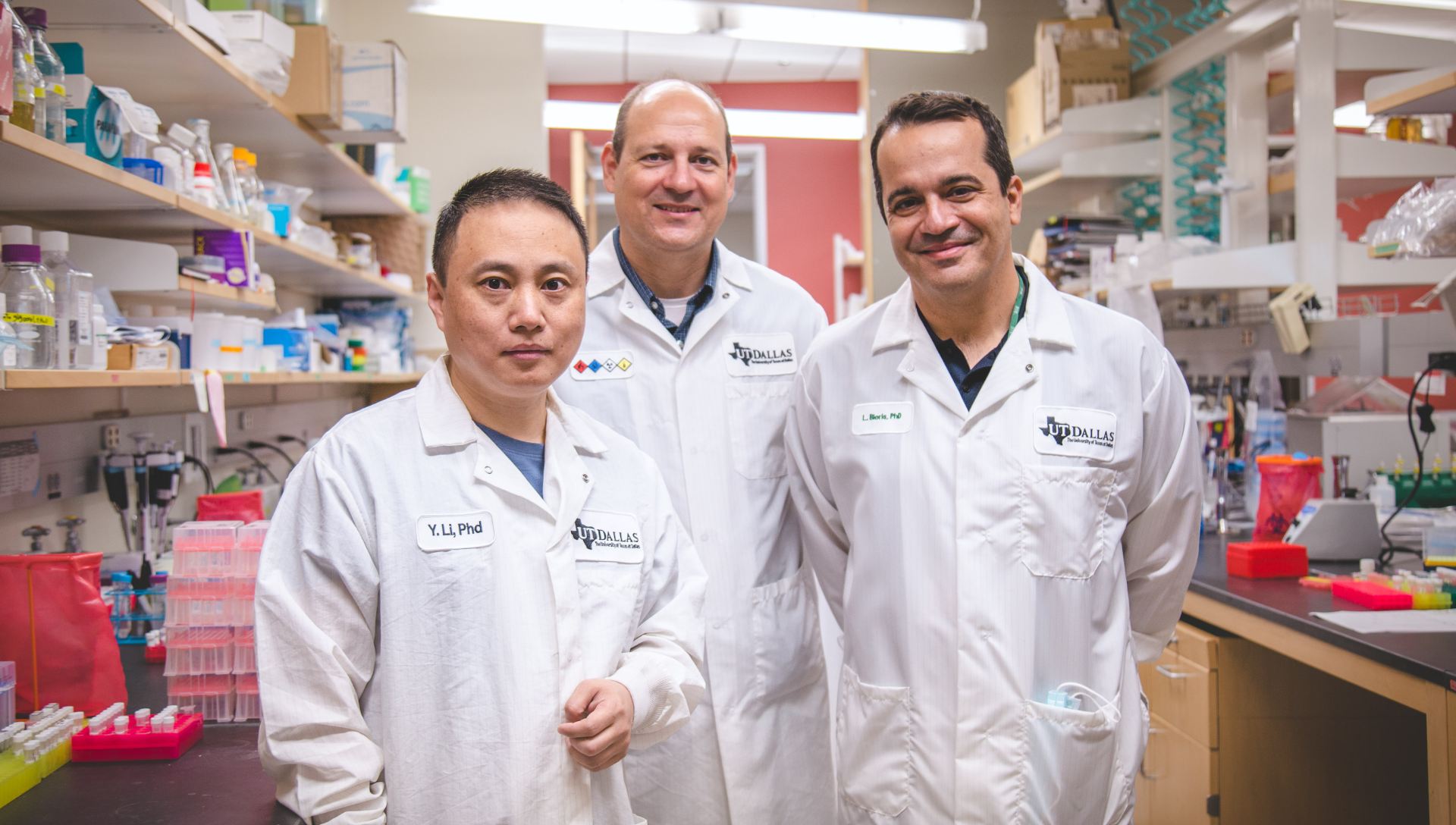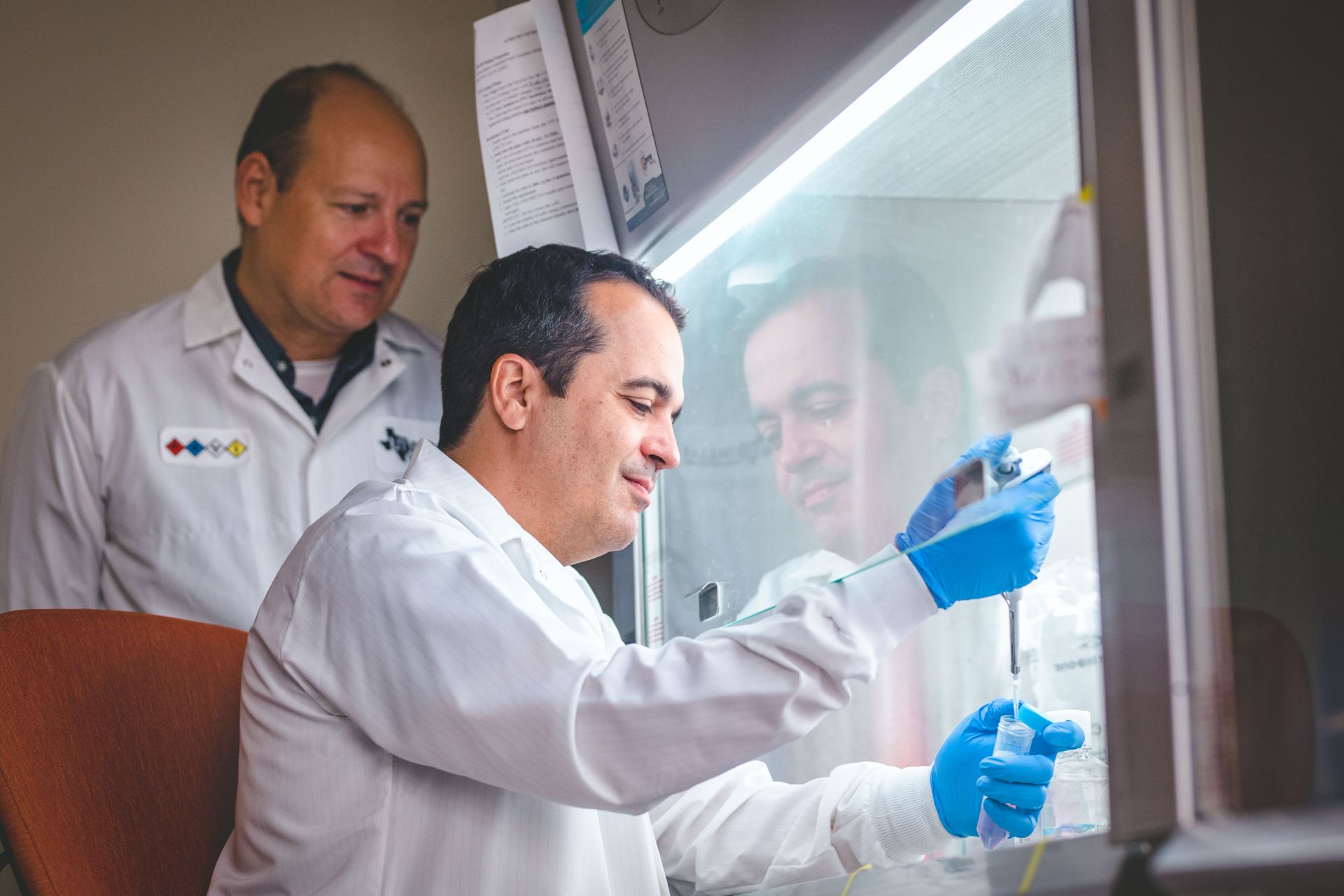
From left: Dr. Yi Li, Dr. Yiorgos Makris and Dr. Leonidas Bleris
New Technology Protects Authenticity of Engineered Cell Lines
UT Dallas researchers have developed a first-of-its-kind method to create a unique identifier for each copy of a cell line to allow users to verify its authenticity and protect the manufacturer’s intellectual property. Custom cell lines are used in the development of vaccines and targeted therapies for a range of diseases.
The engineers demonstrated the method in a study published May 6, 2022, in Science Advances. The study’s co-corresponding authors are Dr. Leonidas Bleris, professor of bioengineering and the Cecil H. and Ida Green Professor in Systems Biology Science, and Dr. Yiorgos Makris, professor of electrical and computer engineering.
Their research to develop unique identifiers for genetically engineered cells was inspired by what are called physically unclonable functions in the electronics industry that serve as a unique “fingerprint” for a semiconductor device.
To apply that concept to engineered cells, the researchers developed a two-step process that takes advantage of a cell’s ability to repair damaged DNA, which is made up of sequences of small molecules called nucleotides.
First, they embedded a five-nucleotide barcode library into a part of the cell’s genome called a safe harbor. In the second step, researchers used the gene-editing tool CRISPR to cut the DNA in the proximity of the barcode. That action forces the cell to repair its DNA using random nucleotides.
“The combination of barcoding with the inherently stochastic cellular error repair process results in a unique, irreproducible fingerprint,” Bleris said.
– Kim Horner



